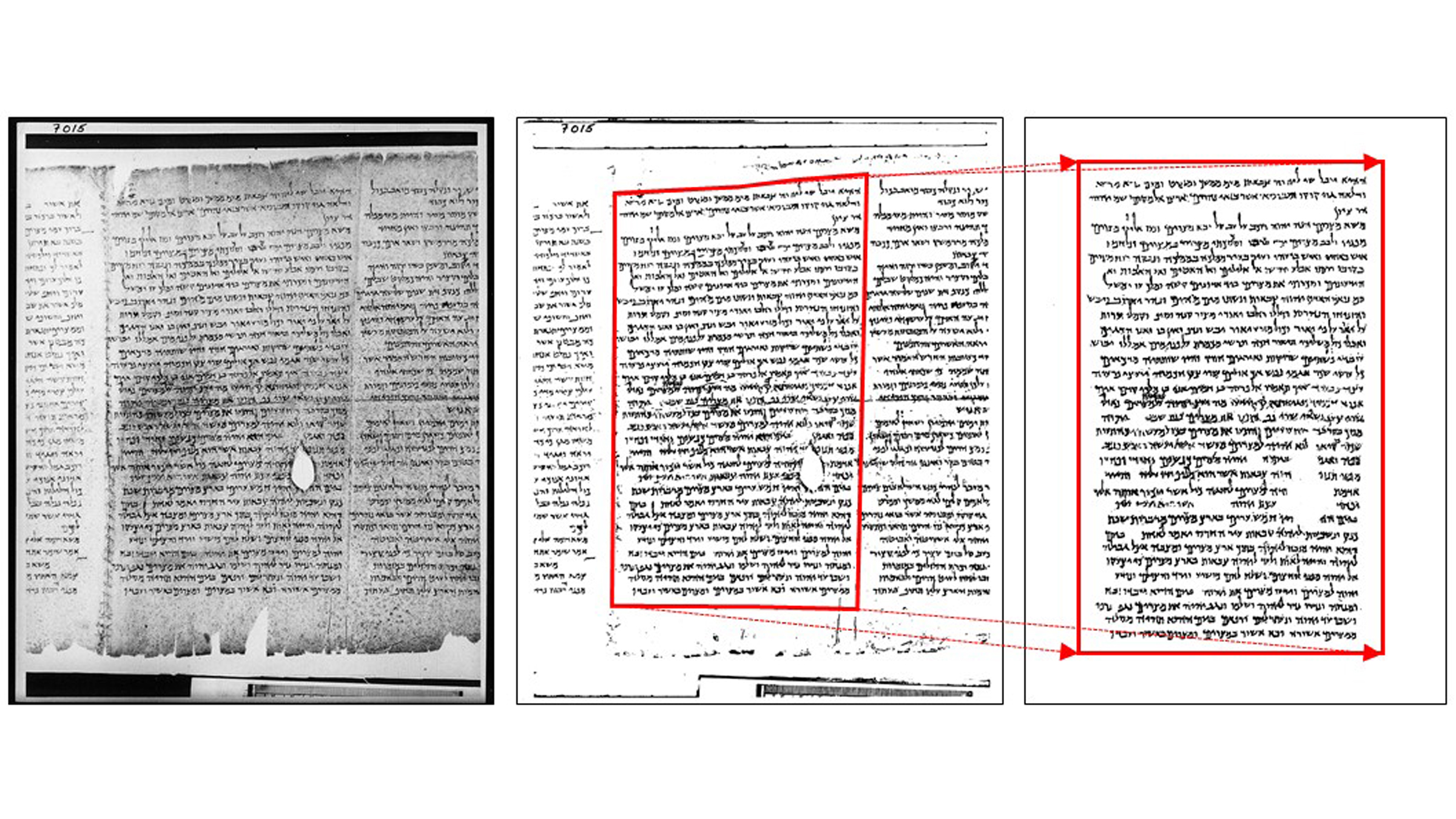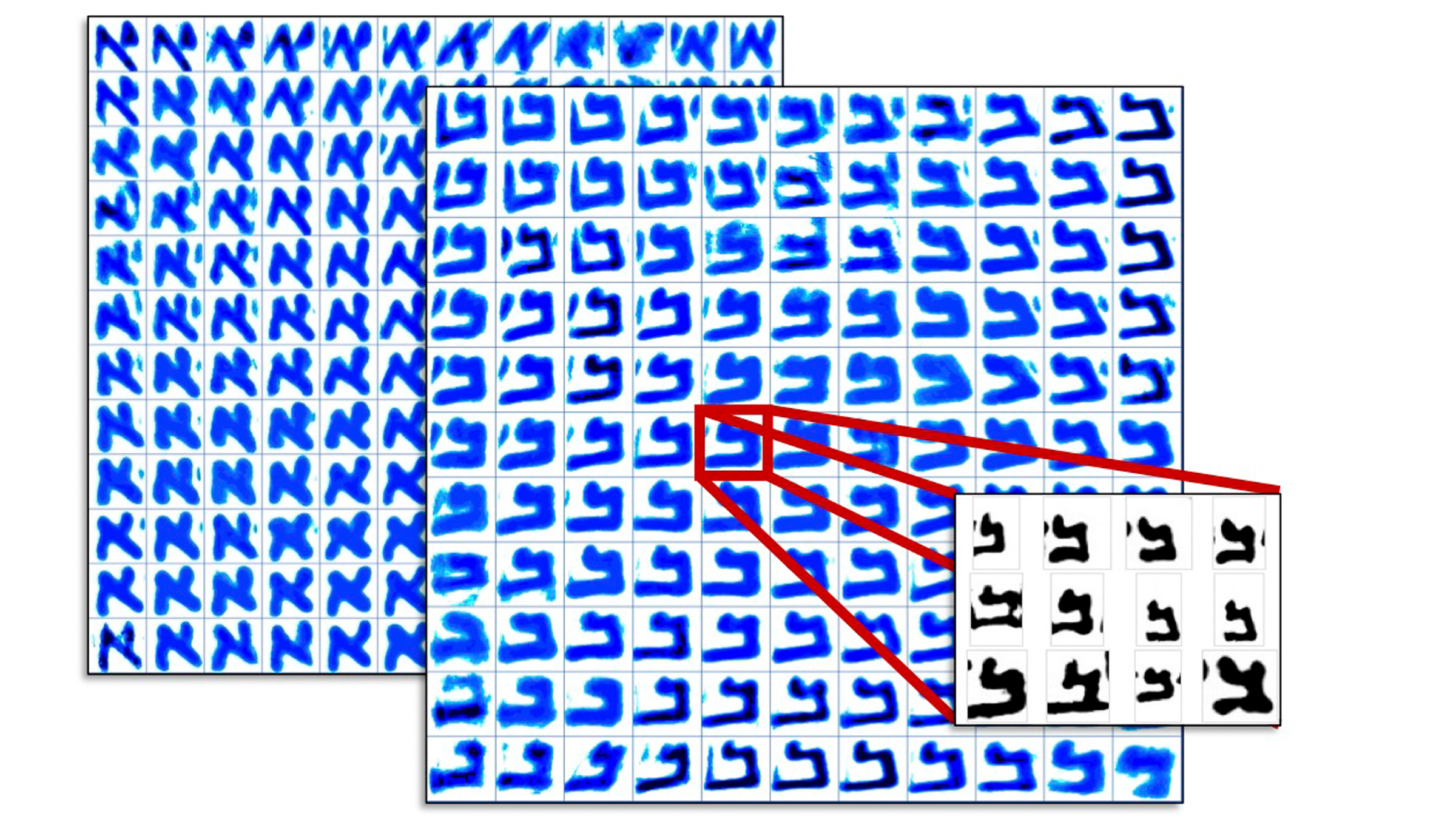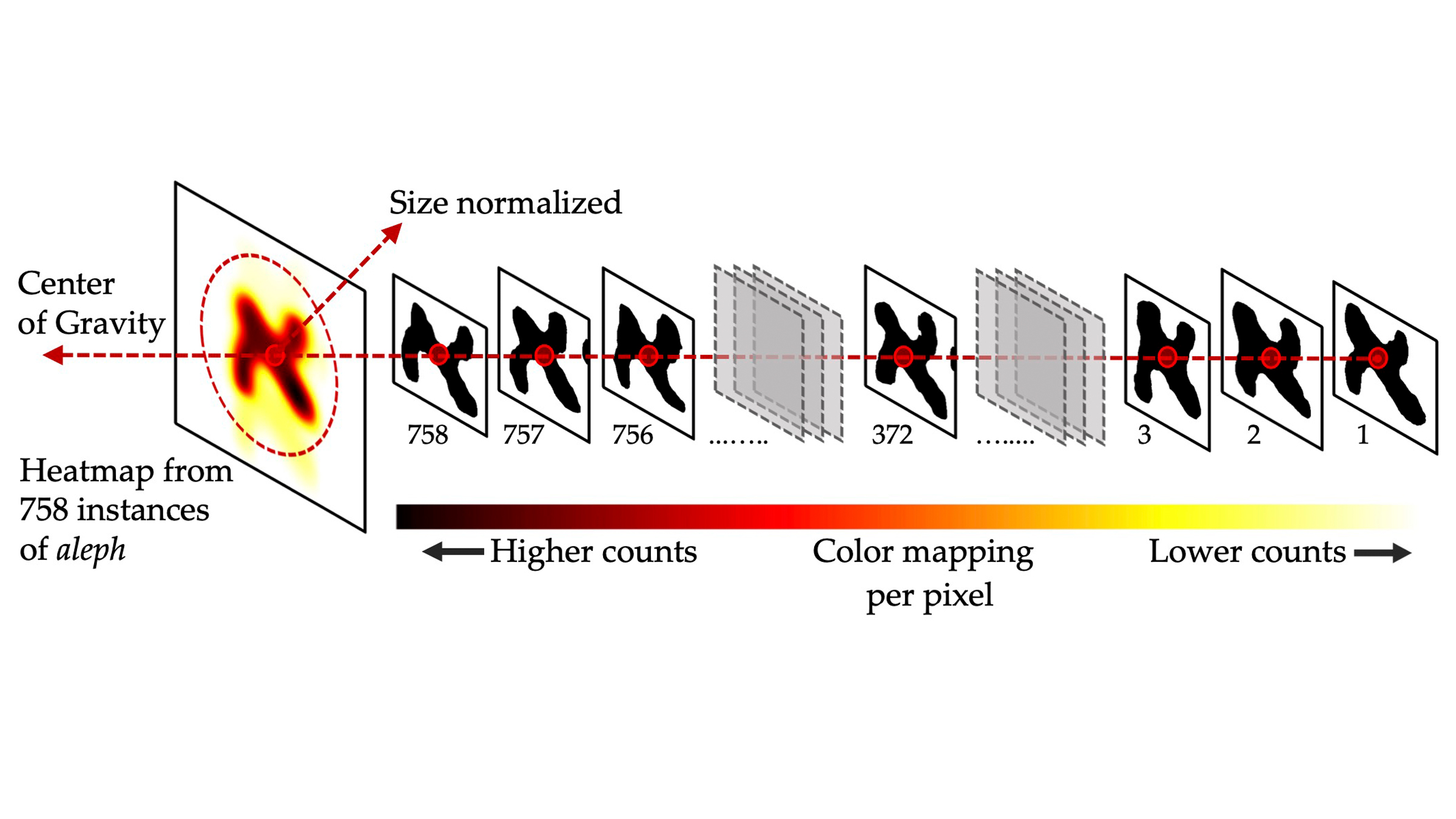Mysterious second writer of Dead Sea Scroll uncovered by AI
The differences in handwriting weren't visible to the naked eye.

A famous Dead Sea Scroll manuscript was written by not just one but two scribes, according to a new study that used artificial intelligence (AI) and statistics to detect subtle differences in handwriting on the ancient document.
The two scribes wrote in such a similar manner that the differences between the two aren't visible to the naked eye, the analysis revealed — a detail that suggests the scribes might have received similar training, perhaps at a school or in a close social setting, the researchers wrote in the study.
"This is just the first step," study principal investigator Mladen Popović, a professor of the Hebrew Bible and ancient Judaism at the University of Groningen in the Netherlands, told Live Science in an email. "We have opened the door to the microlevel of individual scribes; this will open new possibilities to study all the scribes behind the Dead Sea Scrolls and put us in a new and potentially better position to understand with what kind of collection, or collections of manuscripts we're dealing [with] here."
Related: Gallery of Dead Sea Scrolls: A glimpse of the past
The Dead Sea Scrolls were first discovered in the late 1940s, when a young shepherd looking for a stray goat found several manuscripts in a cave in Qumran, in the West Bank. Over the next decade, researchers and local Bedouins found more than 900 manuscripts in 11 caves. These manuscripts are the oldest remaining texts of the Hebrew Bible, dating from the fourth century B.C. to the second century A.D. But it's unclear who or even how many people wrote them, because the scribes didn't sign their names, the researchers of the new study said.
That hasn't stopped biblical scholars from guessing how many scribes were involved in penning the various Dead Sea Scroll manuscripts. "They would try to find a 'smoking gun' in the handwriting, for example, a very specific trait in a letter which would identify a scribe,' Popović, who is also the director of the University of Groningen's Qumran Institute, said in a statement. But these "smoking gun" analyses were often subjective and, as a result, hotly debated, he said.
So, Popović and his colleagues used another approach — AI and statistics — to investigate the Great Isaiah Scroll, one of the seven scrolls originally found by the Bedouin shepherd. This well-preserved scroll, which dates to about 125 B.C., is lengthy — it measures 24 feet (7.3 meters) long and 10 inches (26 centimeters) high — and contains 54 columns of Hebrew text. One spot, in particular, caught Popović's eye; between columns 27 and 28, there is a small break in the text and a new "page," where two sheets have been sewn together. Other researchers had already debated whether this scroll was written by one or two scribes, and Popović's team wanted to see if they could solve the mystery.
Get the world’s most fascinating discoveries delivered straight to your inbox.

In effect, the team wanted to determine "whether subtle differences in writing should be regarded as normal variations in the handwriting of one scribe or as similar scripts of two different scribes," they wrote in the study.
The researchers' methods detected "subtle and nuanced differences in [the] handwriting that we cannot [discern] with the human eye only," Popović told Live Science. The discovery that two scribes collaborated on the Great Isaiah Scroll reveals that ancient scribes "worked in teams," he said. And, unlike the "smoking gun" analyses, this research "is not just a conjecture, but based on evidence now," Popović added.
Related: The 25 most mysterious archaeological finds on Earth
How they did it
When designing the algorithm, the researchers had to train it to differentiate the text, or the ink, from the background — the animal skin or papyrus. This distinction, known as binarization, was designed by study co-researcher Maruf Dhali, a doctoral student in the artificial intelligence department at the University of Groningen, who created an artificial neural network that could be trained using deep learning. This neural network recorded the original ink traces on the manuscript, even when these ancient letters were transformed into digital images.
"This is important because the ancient ink traces relate directly to a person's muscle movement and are person-specific," study senior researcher Lambert Schomaker, a professor of computer science and artificial intelligence at the University of Groningen, said in the statement.

The neural network analysis revealed that the 54 columns of text in the Great Isaiah Scroll fell into two distinct groups, which had a transition about halfway through the manuscript. Dhali told Schomaker that there might be more than one writer, so Schomaker did a separate analysis but got the same result. In this second analysis, Schomaker looked at fraglets, or parts of the letters that "can be more precise, distinctive and informative in finding significant shape differences than the full characters," the researchers wrote in the study.
To be extra cautious, the team added checks and controls to the text. “When we added extra noise to the data, the result didn't change," Schomaker said. "We also succeeded in demonstrating that the second scribe shows more variation within his writing than the first, although their writing is very similar."

Next, the team performed a visual analysis by creating "heat maps." These maps incorporated all of the variants of a given letter, such as the Hebrew letter aleph (א), found in the scroll. Then, they made an average version of the letter from the first 27 columns and another from the last 27 columns. After that, they compared these averaged letters, and found that they could easily spot differences between the two. Moreover, the differences were statistically significant, Popović said.
Popović and his colleagues plan to investigate other scrolls, which may reveal different origins or training for different scribes, he said. These analyses may also shed light on the communities that wrote the Dead Sea Scrolls. "Understanding the scribes of the Dead Sea Scrolls makes it possible to better understand what I call the cultural evolution of the Hebrew Bible," Popović told Live Science.
The new research "is the first time that automatic procedure was applied to identify the transition of style in the Great Isaiah Scroll," Shira Faigenbaum-Golovin, a researcher in the Department of Applied Mathematics at Tel-Aviv University who specializes in biblical-era handwriting analyses, told Live Science in an email. Faigenbaum-Golovin was not involved in the study. "The method used in this study handles well the challenges rais[ed] by the poor state of preservation of the scroll via robust binarization."
The study was published online Wednesday (April 21) in the journal PLOS One.
Originally published on Live Science.

Laura is the managing editor at Live Science. She also runs the archaeology section and the Life's Little Mysteries series. Her work has appeared in The New York Times, Scholastic, Popular Science and Spectrum, a site on autism research. She has won multiple awards from the Society of Professional Journalists and the Washington Newspaper Publishers Association for her reporting at a weekly newspaper near Seattle. Laura holds a bachelor's degree in English literature and psychology from Washington University in St. Louis and a master's degree in science writing from NYU.
 Live Science Plus
Live Science Plus





